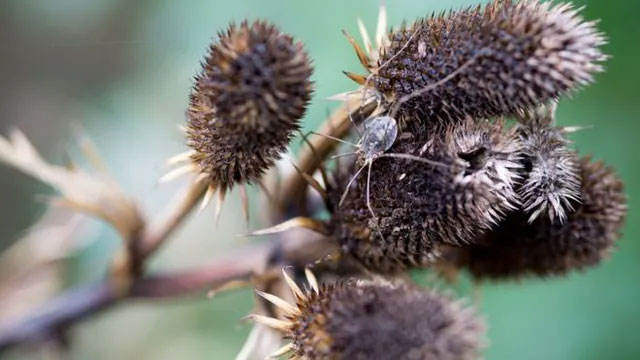How garden will attract more insects?
The alarm is sounding about the global decline in insects! Recent studies show that the number of insects is plummeting, due to habitat loss and pesticides. You can create an environment for insects by creating a lot of foliage in your home garden , a recent study has confirmed.
Terrestrial insects, such as beetles, often benefit from dense vegetation.
However, spiders prefer a bit of bare ground - such as a lowland patch of grass with a few sparse flowers.

An insect on the seed at the Wisley garden.
In this context, a new study, published in Biodiversity and Conservation, investigates how plants can best support the development of insects.
"The main message is that the more foliage you have, the more invertebrates you'll have in your garden," said Andrew Salisbury, chief entomologist at the Royal Horticulture Association.
Gardeners can make a lot of difference just by planting plants in their garden, making it a little bit better and avoiding the use of pesticides at any time.
While planting dense plants is good for insects in general, a special group of invertebrates - spiders that live on the ground, better adapt to clear places so that spiders can spin silk."It is possible that with fewer foliage, especially on the ground, they can move and hunt more freely , " entomologists said.
The researchers looked at how invertebrates thrive in different plant combinations, including native, near-native and exotic species.
They concluded that planting a variety of trees is important, favoring native and near-native species. And evergreen, less deciduous trees like holly and pittosporum may have a special role for invertebrates, providing shelter during the winter months for ladybugs, jumping beetles and beetles. .

Bug research garden at Deers farm, Wisley village.
How to support garden invertebrates
- Plant lots of trees, but keep some sparse areas to help specific groups, notably spiders.
- Use plenty of native and near-native plants to accommodate the largest number of terrestrial invertebrates.
- Try to plant some less deciduous trees in your garden to provide shelter for invertebrates.
- The greater the variety of plants in the garden, the greater the diversity of invertebrates.
- Beautiful photos: Insects in the rain garden
- 'Elves' sleep in the garden
- Spain discovered unique insects
- A bunch of beautiful images of insects
- Insect-eating insects like to eat
- Crows attract mates like people
- The world's largest botanical garden on Oman desert
- Beautiful photo: Lost in the world of insects
- Set of brilliant photos showing off
- Singapore's super-garden 'super-tree'
- 3800 year old potato garden excavation
- The most beautiful botanical gardens in the world
 Why do potatoes have eyes?
Why do potatoes have eyes? 'Tragedy' the world's largest carnivorous life: Death becomes ... public toilet
'Tragedy' the world's largest carnivorous life: Death becomes ... public toilet Tomatoes were once considered 'poisonous' for 200 years
Tomatoes were once considered 'poisonous' for 200 years Detecting microscopic parasites on human face
Detecting microscopic parasites on human face